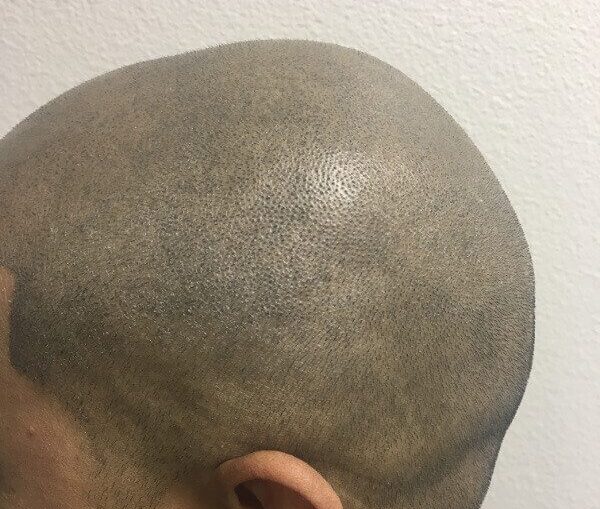
The Truth Behind SMP Pigments: What Artists Don't Want to Talk About
Article by: Alex Asher, SCALPS & CO
In the world of scalp micropigmentation (SMP), pigment selection plays a pivotal role in achieving natural, realistic results. Yet, despite the impact of this factor, many SMP artists don’t delve deeply into the science behind pigments and how they interact with individual skin tones. The result? Blueish undertones and unnatural appearances that could have been prevented with better knowledge and proper application. This article reveals why these blueish results occur and explains the nuances of pigment selection that only 5% of artists understand.
The Issue with Blueish Results
We’ve all seen how some black tattoos can appear blue over time, while others maintain their intended black shade. This effect also occurs in SMP, leaving some clients with a blueish hue instead of a consistent natural color. The root cause lies not in the pigments themselves, but in the client’s undertone, which impacts how the pigment appears beneath their unique skin layer.
SMP has been around for about 15 years. For most of this time, the industry predominantly used black carbon-based pigments. A few years ago, manufacturers introduced brown pigments—essentially black pigments mixed with red or orange modifiers—claiming these new pigments would resolve the blueish issue. Unfortunately, this tactic was more of a marketing strategy to sell an extra pigment bottle rather than an effective solution.
Understanding the Undertone Issue

Can you see the blueish-greenish result in the picture above? It’s very subtle, and most clients don’t even notice the difference until someone points it out because they are just happy to have their hairline back. But there’s no reason why you can’t have the best of both worlds by making sure you select an artist that’s knowledgeable in color theory. The core reason behind blue results is a mismatch between the pigment and the client’s skin undertone. If a client has a specific undertone, such as green or yellow, black pigments may appear blue once the skin has healed over them. This phenomenon is similar to how certain tattoos can turn blue over time.
Combating the Blue Tint
When artists are asked if they use color theory, most will confidently respond, “Yes, we use brown pigments and orange/red modifiers for light-skinned clients.” Don’t be fooled—this is not true color theory. Such a simplistic approach will not prevent blue/green results if you fall into the 25% of people prone to these undertones. Effective color theory requires understanding each client’s unique undertone and using precise modifiers to counteract unwanted hues, rather than relying on a one-size-fits-all solution that won’t deliver optimal results.
Preventing this outcome requires a more sophisticated approach than using black pigments with modifiers. Artists need to fully understand a client’s undertone (whether green, red, yellow, purple, or otherwise) and apply the right modifier from the opposite side of the color wheel. In this way, artists correct the undertone rather than the blue result directly, ensuring clients receive the results they want.
Why Artists Avoid Talking About It
This process demands a solid grasp of color theory and the willingness to adapt to a more intricate method. Learning and applying this technique takes time and effort, and unfortunately, many artists are reluctant to make this change. They continue using standard black or brown pigments, hoping their clients won’t fall into the 25% prone to blueish results. But the reality is that one in four clients ends up with an undesirable hue when standard pigments are used.
The Solution: Seek the Experts
Currently, only about 5% of SMP artists employ this advanced pigment selection technique. It’s essential to find an artist who understands and incorporates the principles of color theory to ensure your SMP results are both natural and long-lasting. At SCALPS CO, New Jersey, we’re proud to be at the forefront of the SMP industry, using only the best products and techniques to give our clients flawless results. Our artists are highly trained in understanding undertones and color theory, delivering a solution customized to each client.
Conclusion: Make the Right Choice
Don’t fall into the trap of thinking that all SMP artists are the same. Your options are to either hope your undertone isn’t prone to blue results or find an artist who understands how to handle pigment selection properly. By choosing an experienced, knowledgeable professional who uses the right process, you’ll avoid the risks of an unnatural blue hue and achieve the confidence you deserve.
Find out why SCALPS CO stands out in the SMP industry. We’re committed to giving our clients personalized results that look authentic and complement their unique style.


